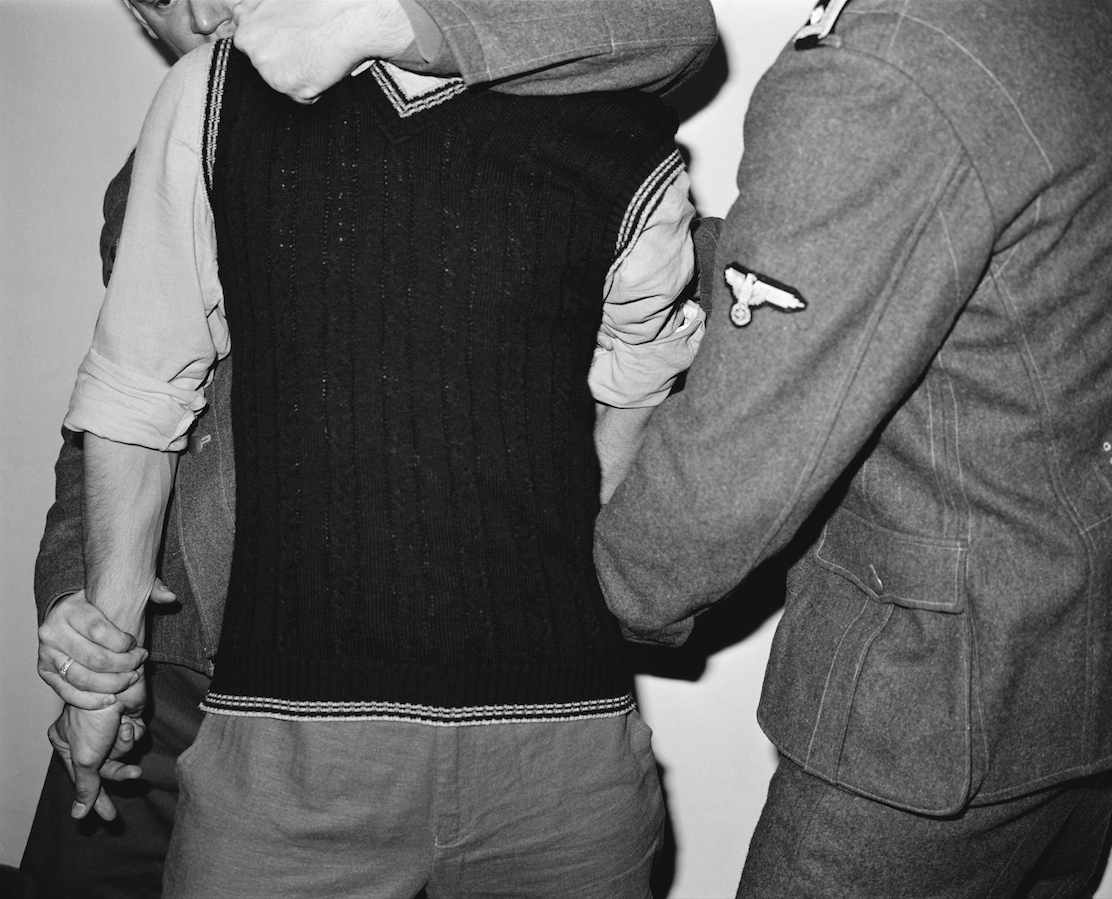
‘…to be real – to become fluent, natural, to cut out the detour that sweeps us around what’s fundamental to events, preventing us from touching their core: the detour that makes us all second-hand and second-rate’.[1]
These words spoken by the nameless protagonist in Tom McCarthy’s 2005 novel, Remainder, express a certain desire to become ‘real’, to access a moment that is authentic, unique, and fundamentally of the present. The novel revolves around this central narrator, who has received a large financial settlement after an accident, and who throughout the plot continues to obsessively recreate half-remembered events from his life before the incident. Embedded within each of his re-enactments, which gradually become more elaborate, all-consuming and eventually violently real, is the inescapable frustration of repetition. The continuous expenditures of energy that constitute the process of repeating, of re-enacting, can never result in any predetermined goal; as each occurrence is measured across a new, singular moment in time and space, so repetition is more concerned with difference that it is with sameness.
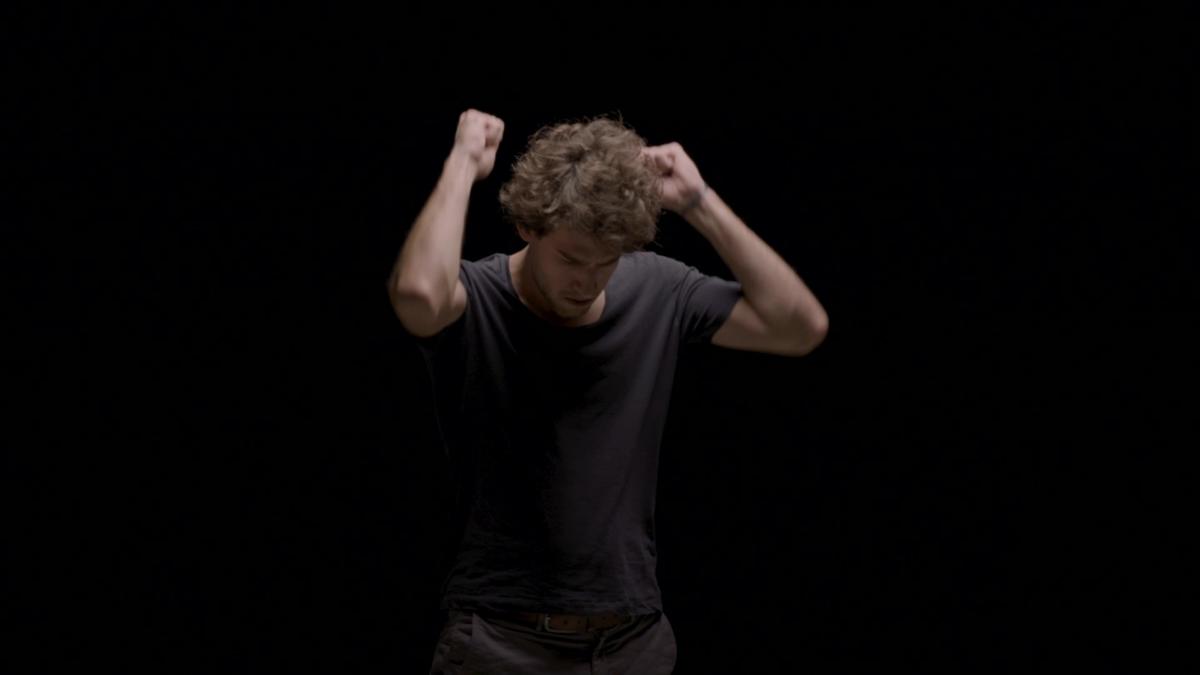
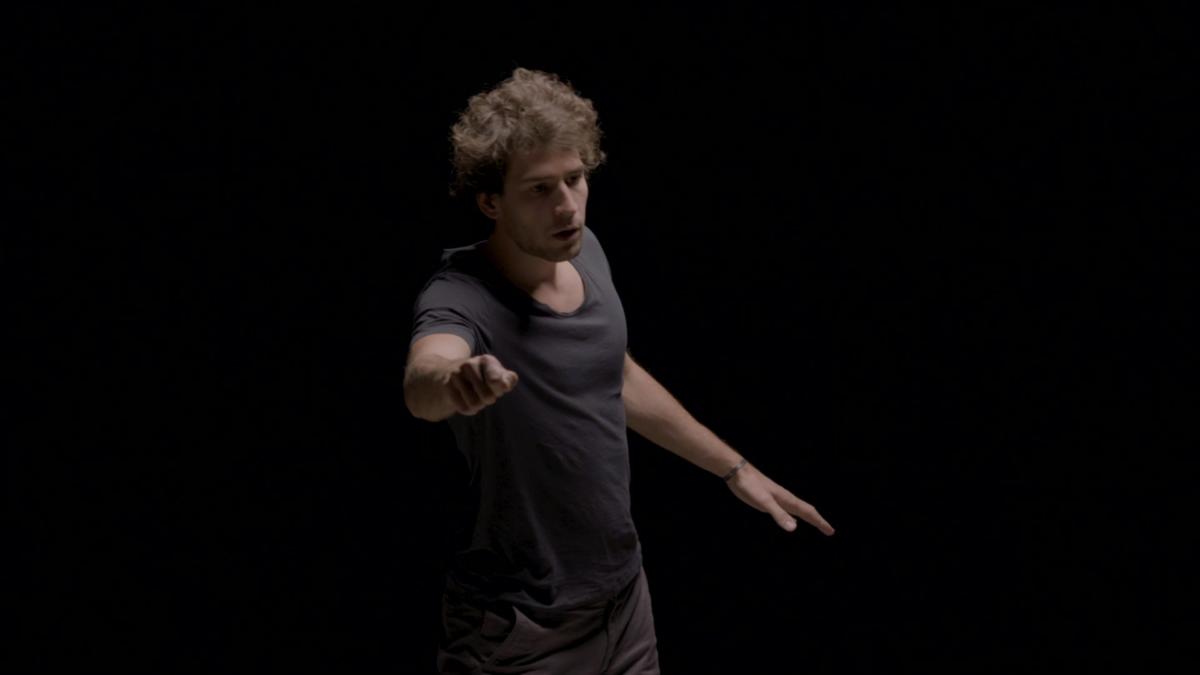

The work of Grzegorz Stefański is positioned at this nexus of repetition, re-enactment and difference. Through varying formal strategies and scenarios, which are often enacted through the medium of the body, Stefański draws attention to and yet subtly unravels the complex relationship between internal consciousness and external gesture. Unlike McCarthy’s protagonist, however, Stefański’s works, which bridge both still and moving image, are not preoccupied with any desired or essential result, rather they can be understood as a series of experiments, propositions or actions through which unexpected and tangential meanings are allowed to emerge. Where McCarthy’s narrator wishes to cut out the sweeping detour that surrounds the fundamental nature of a particular event, movement or feeling, Stefański’s work privileges this processual detour and the cathartic potential of its embodiment.
The sense of repetition that is embedded within Stefański’s works is based around a certain dialectic of restraint. Restraint is a nuanced word, slipping between associations of a psychological ‘holding back’ or denying certain personal liberties, and the highly physical act of force preventing movement in space. This relationship between interior and exterior expressions of restriction is evident in a photograph that forms part of Stefański’s exhibition at l’étrangère Gallery. Exhibited under the theatrical exposure of a stage light, the photograph depicts the torsos of two men dressed in Nazi uniforms holding in tight restraint the faceless body of a civilian. The image is a reconstruction of a photograph included in Larry Sultan and Mike Mandel’s project Evidence (1977), the culmination of the photographers’ three-year search through the files and archives of over one hundred American government agencies, educational institutions and corporations. Key to the presentation of their final sequence of 59 images was the intentional omission of context in order to create what the photographers’ call ‘a poetic exploration upon the restructuring of imagery’. When context is removed, the image becomes released from the binds of a fixed and, in this case, factual, meaning. What emerges instead are a series of abstracted and surreal gestures.
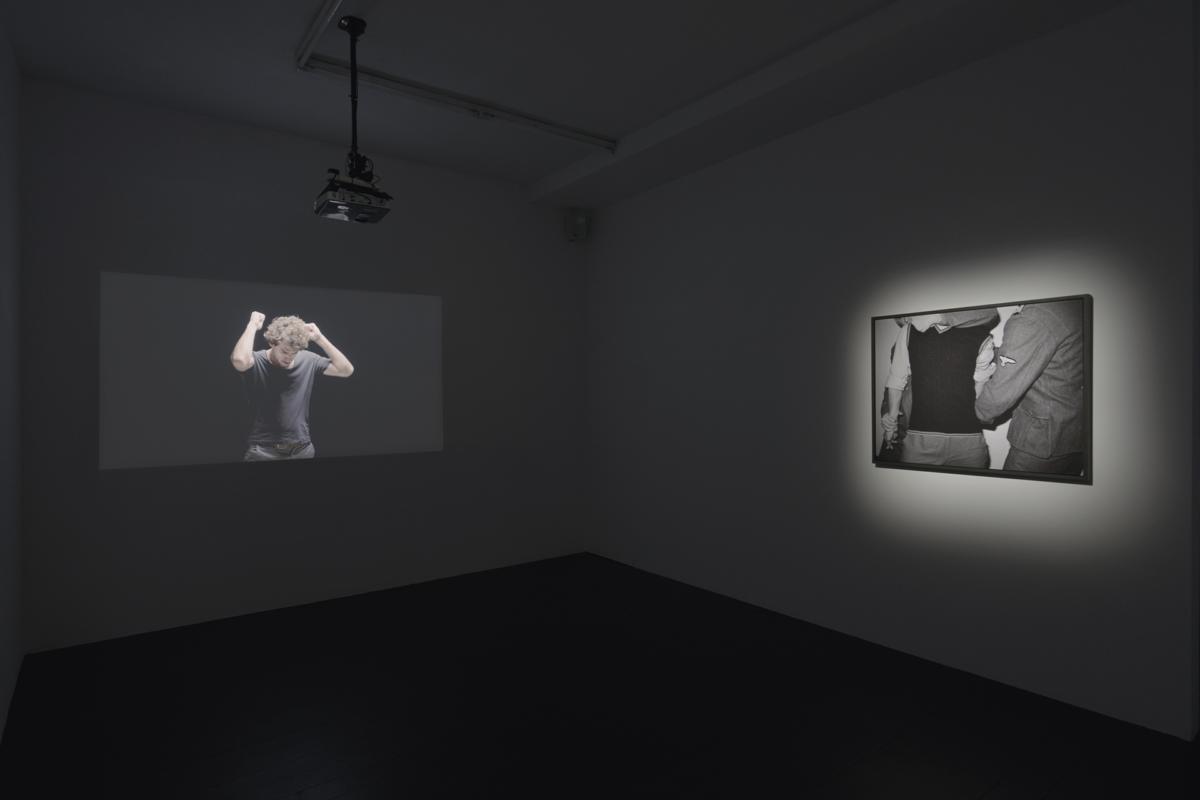


Using this photograph as the starting point for his own reconstruction, Stefański not only inflects this rendition of restraint with the socio-political history of Nazism, but he also activates the stasis of his source material through a corresponding video installation. This moving image work, for which Stefański won the Ivan Juritz Prize, London, and the Grand Prix at Young Art Biennale, Poland, and which was exhibited at Wola Museum and Studio Gallery, both in Warsaw (2016), documents a series of choreographed activations of this physical act of restraint. In repeated intervals, the two uniformed actors are galvanised into motion as they manhandle the individual before quickly returning to a neutral position. The abrupt, start-stop nature of each sequential repetition may highlight the artificiality of this staged set-up, however it also renders the action banal, even ridiculous, by breaking apart the connection between action and intention. As viewers, we are prevented from creating a narrative out of what we are looking at.
The processes by which Stefański evades singular, narrative structures within the frame of a photograph or the duration of a video brings to mind what the American choreographer, Trisha Brown, calls ‘pure movement’. As she says:
“Pure movement is movement that has no other connotations. It is not functional or pantomimic. Mechanical body actions like bending, straightening or rotating would qualify as pure movement providing the context was neutral. I use pure movements, a kind of breakdown of the body’s capabilities…I do not promote the next movement with a preceding transition and, therefore, I do not build up to something…I often return to a neutral standing position between moves.”[2]
Whereas in restraint (2016), Stefański partners the mechanical motion of ‘pure movement’ with a politically-charged recontextualisation of Sultan and Mandel’s source image, in the video work, do-over (2016), he moves much closer to Brown’s definition. A male figure stands isolated and surrounded by a black background, proceeding at intervals to exert forceful gestures outwards into an empty space. Each paroxysmal movement appears as an outburst of frustration or aggression, whilst the subject’s face shifts from concentration to an apparent sadness. For this work, the artist worked with a musical conductor, asking him to act out from memory fragments of a particular musical composition, but without the presence of an orchestra. Denied the feedback loop that he would usually receive from each orchestral movement, the figure’s actions are not only decontextualised, but they also become internalised as if caught in a perpetual cycle of expression and repression. In a similar manner to how Brown describes each pure movement, where preceding transitions and build-ups are removed, so the expected flow and crescendo of music is replaced by an erratic breakdown of gesture. Through each choreographed, physical exertion, what persists is a sense of relentless endeavour on the part of the conductor. The American choreographer, William Forsythe, describes choreography as eliciting action upon action: ‘an environment of grammatical rule governed by exception, the contradiction of absolute proof visibly in agreement with the demonstration of its own failure’.[3]
In do-over, Stefański highlights a connection between the grammatical scoring that constitutes musical composition and its expression through physical movement. In line with Forsythe’s thinking, however, each movement from interior thought to exterior gesture is belied by the potential for its own failure.

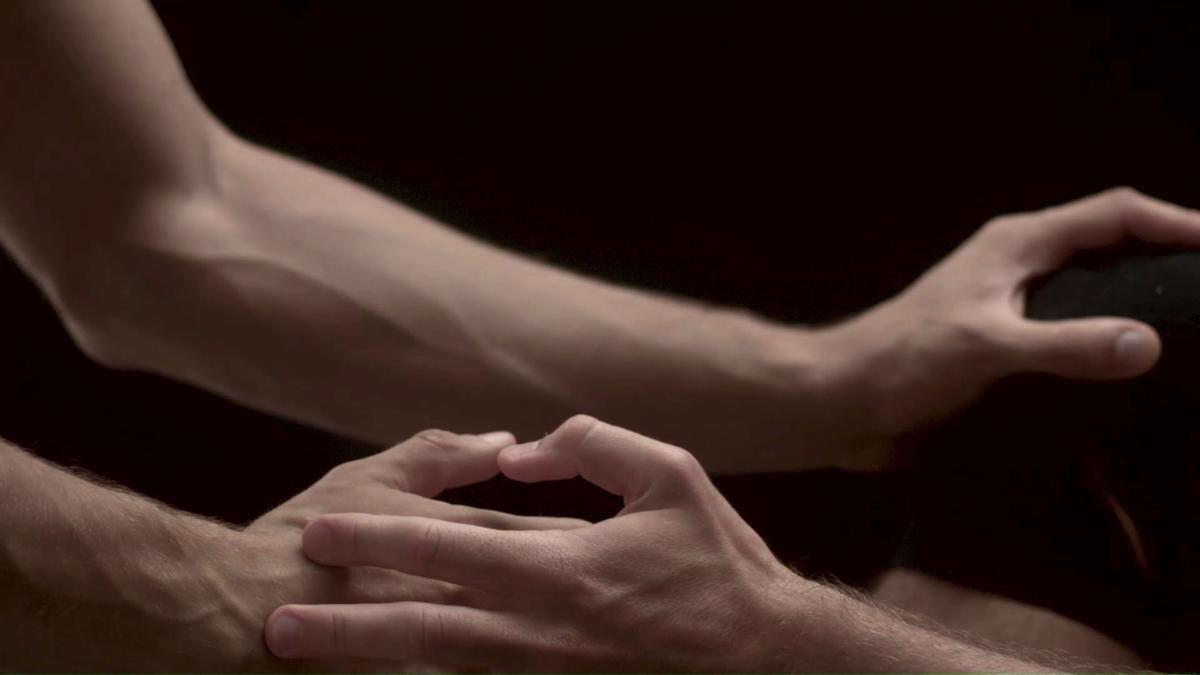
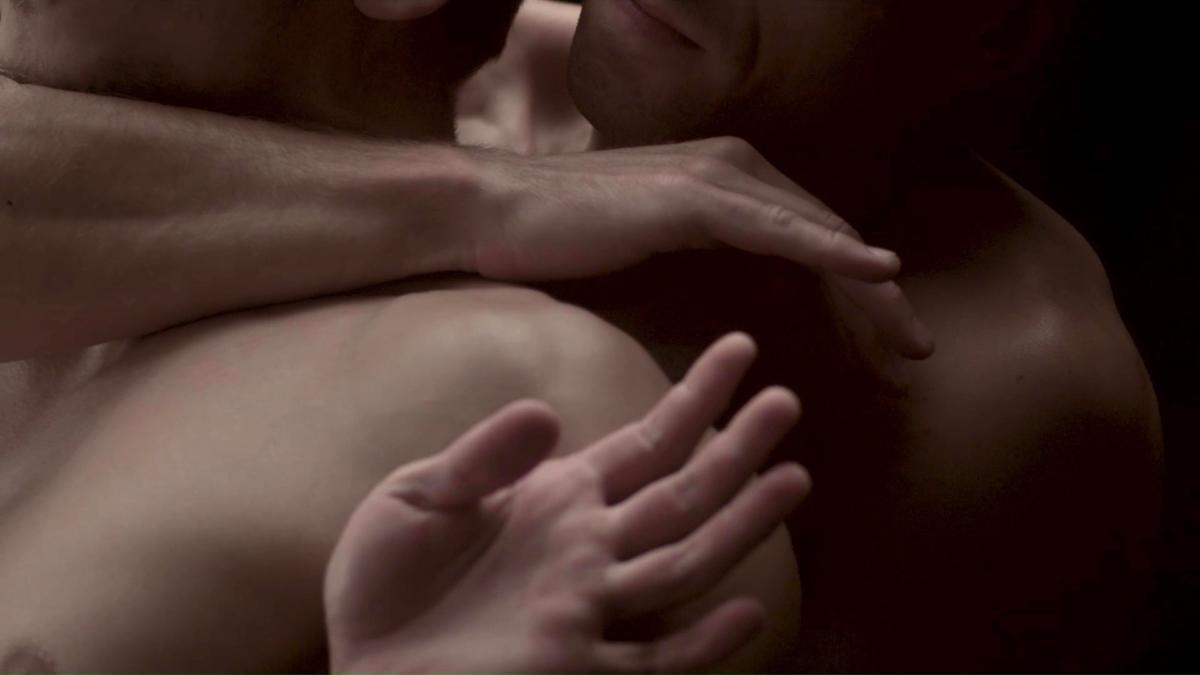
In choke (2017), which is presented in the front gallery at l’étrangère, two intertwined bodies demonstrate their own form of choreography. For this work, Stefański filmed two Jiu-Jitsu fighters performing a routine and subsequently manipulated the footage through a slow-motion playback. The result is as much of an intimate analysis of these entangled bodies as it is a documentation of their choreographed performance. As fragmented limbs silently glide over each other, the close-up position of the camera abstracts their physicality in a manner that recalls Willard Maas’ 1943 experimental film, Geography of the Body, where extreme close-ups of male and female body parts render them as surreal landscapes. The human body is pictured as an undiscovered, mysterious continent, a series of terrains and textures that are coursed over by the camera lens.
This positing of Maas’ lens as the caresser of a human subject is similarly intimated in Stefański’s filmic analysis of the Jiu-Jitsu fighters, whilst it also highlights the at times uncomfortable proximity between acts of touch that are violent and those that are eroticised. This ambiguous line is visualised through the subtle energy of each muscular movement, bulging vein or skin ripple; the almost free-floating unison of these two bodies in space confuses the autonomous boundaries of each fighter’s body, as they become a single, shifting entity. The ambivalent nature of the figures’ interaction is not simply a question of the visual equivalence between acts of violence and sexual intimacy, but rather the film nods to a deeper understanding of how power can function within different physical dynamics, be it those of a Jiu-Jitsu fight or of a copulating couple. By abstracting both the movement and the context of his subjects, Stefański suggests that our continuous transitions from interior sensation to external expression are always caught up within a certain power dynamic.
What resonates when looking at Stefański’s hypnotic films is the sense of an infinite, temporal movement. This visual rhythm of potentially endless repetition is embedded within the artist’s precise configuration of body, gesture and image within each work. Contrary to the desire to access a singular and unique action, moment or feeling that is expressed by McCarthy’s narrator, Stefański emphasises process over endpoint, proposals over answers, restraint over looseness, in order to scrutinise the constantly shifting boundaries of human gesture and the behavioural systems that are woven through their movement.
Joseph Constable
Joseph Constable is Assistant Curator at Serpentine Galleries, London, and an independent writer. He holds an MA in Curating Contemporary Art from the Royal College of Art, London, and is the 2015 recipient of the Whitechapel Gallery’s NEON Curatorial Award.
[1] Tom McCarthy, Remainder, 2005, London: Alma Books, p. 244.
[2] Trisha Brown, ‘Locus’ (1975), in Trisha Brown: Dance and Art in Dialogue 1961-2001, 2002 (Andover, Massachusetts: Addison Gallery of American Art/Cambridge, Massachusetts: The MIT Press).
[3] William Forsythe, ‘Choreographic Objects’ in William Forsythe: Suspense, 2008 (Kraichtal, Germany), p. 5.
Imprint
| Artist | Grzegorz Stefański |
| Exhibition | choke |
| Place / venue | l’étrangère Gallery, London |
| Dates | 22 November 2017 - 13 January 2018 |
| Website | letrangere.net |
| Index | Grzegorz Stefański Joseph Constable l’étrangère Gallery |
